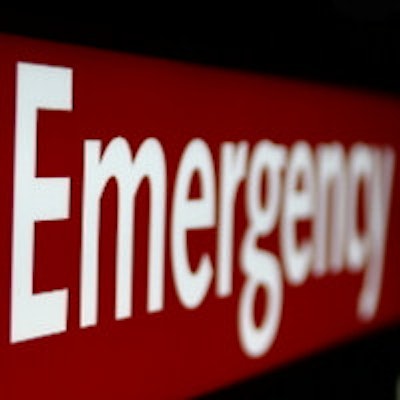
If Domino's can track pizzas from order through delivery, why can't we keep better track of patients? That's the question raised by a new study in the Journal of the American College of Radiology that found that many emergency patients got duplicate x-ray and CT exams because doctors weren't sure if their initial orders had been completed.
Researchers from Emory University examined the cases of more than 3,600 patients who underwent both x-ray and CT studies on the same body part as part of their workup after admission to the emergency department (ED). The team led by Dr. Tarek Hanna found that many of these exams were unnecessary, with both x-ray and CT sometimes ordered simultaneously, or CT ordered before results from an initial x-ray study were received.
 Dr. Tarek Hanna of Emory University.
Dr. Tarek Hanna of Emory University.What led to the duplicate exams? Hanna and colleagues could only speculate, but they believe that most of the duplicate ordering occurred because emergency doctors weren't sure of the status of their initial orders in the system, and they didn't have access to the results of the first study (JACR, September 18, 2015).
Rising use of imaging
The use of imaging has been increasing in the emergency setting along with overall patient volume; previous studies have documented that x-ray is now used in 34.4% of emergency visits and CT in 15.8% of cases.
Hanna and other emergency radiologists at Emory had noticed that many patients were getting duplicative studies of the same body part. What's more, many studies weren't being received in the expected order -- that is, a less advanced modality first for triage, followed by a more advanced modality for workup and problem-solving. Chest x-ray and CT were the two modalities that seemed to overlap the most, he said.
Hanna's group decided to study the timing of imaging orders in patients who received duplicative x-ray and CT studies, comparing when exams were ordered, when they were completed, and when final reports were delivered for both modalities. The goal was to identify cases of unnecessary imaging and radiation exposure.
The study population included 3,627 patients who received both imaging exams in the emergency setting between 2009 and 2013 at two urban, university-affiliated hospitals. The researchers tracked the sequence in which each study was ordered, and grouped those patients who had similar timelines to identify cases of potentially wasteful imaging.
| Exam ordering sequence | ||
| Type of order sequence | No. of total patients | No. of subset in which CT was completed before x-ray |
| X-ray ordered before CT | 3,437 (94.8%) | 4 (0.1%) |
| X-ray and CT ordered simultaneously | 91 (2.5%) | 13 (14.3%) |
| CT ordered before x-ray | 43 (1.2%) | 9 (25.6%) |
The cases in which x-ray and CT exams were ordered simultaneously were particularly problematic, Hanna said. When the researchers followed up with emergency physicians, they discovered that simultaneous orders were sometimes placed because the ED physicians expected to get the chest x-rays more quickly than the CT exams -- even though there was only a 55-minute difference between the two in terms of when the results were delivered.
"If we can get chest CT results to them faster, we can obviate the desire to order chest x-ray," Hanna told AuntMinnie.com.
Also troubling were the 28 cases (0.7%) in which the chest x-ray was completed after the CT was performed. In these cases, the CT results had already been uploaded into the PACS and were available for interpretation, but the chest x-ray on order was still performed.
"In the absence of an interval procedure or change in patient status (as in these cases), [chest x-ray] adds no value," the authors wrote. "We ascribe these instances to a lack of valuable, real-time information."
Another inefficient scenario was when an order was placed for a second study before the first order had been completed, or before the first report was available. In 1,826 (50.3%) of the total 3,627 cases, the second imaging order was submitted before the final report from the first modality was available.
Finally, the researchers also found that in 354 cases (9.8%), the second imaging study was ordered before the first one was even completed (to say nothing of when the report was delivered). It's possible that a change in a patient's condition might alter an emergency physician's request for imaging, but redundant imaging is still occurring.
And in any event, the first imaging study should be canceled if a second one has been ordered, Hanna and colleagues noted.
Jumping the gun?
The authors speculated that emergency physicians were not waiting for the final report before ordering additional imaging. One could argue that emergency clinicians should be able to base decisions on their own interpretation of images in the PACS before the final report is received; however, previous studies have noted discrepancies between interpretations made by emergency providers and final reports by attending radiologists, they wrote.
Hanna believes that the growing volume in emergency departments has made it more difficult than ever to track the status of individual patients. The arrival of PACS has helped in some respects by making images available throughout an enterprise once they've been acquired, but providers still don't have a good way to track the exact status of patients and reports -- much as Domino's can tell customers exactly where their pizza is in the order and delivery process.
"A lot of redundancy could be removed if ED providers had a technology tool allowing them to assess every stage of interpreting images," Hanna said.




















